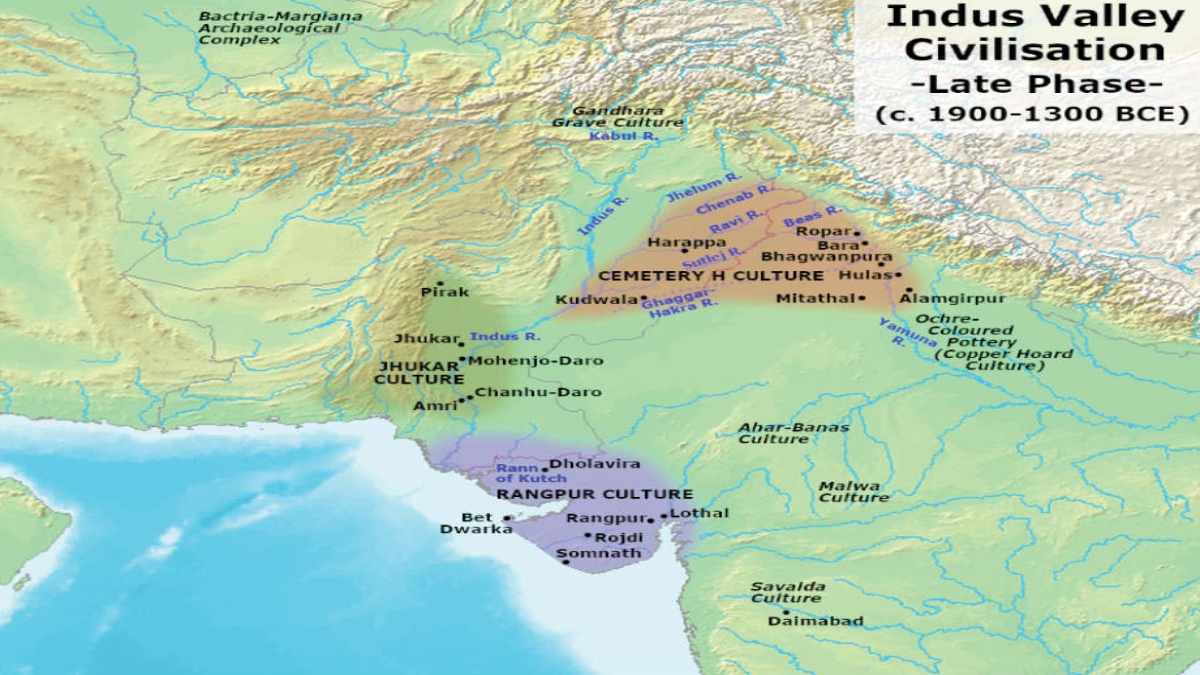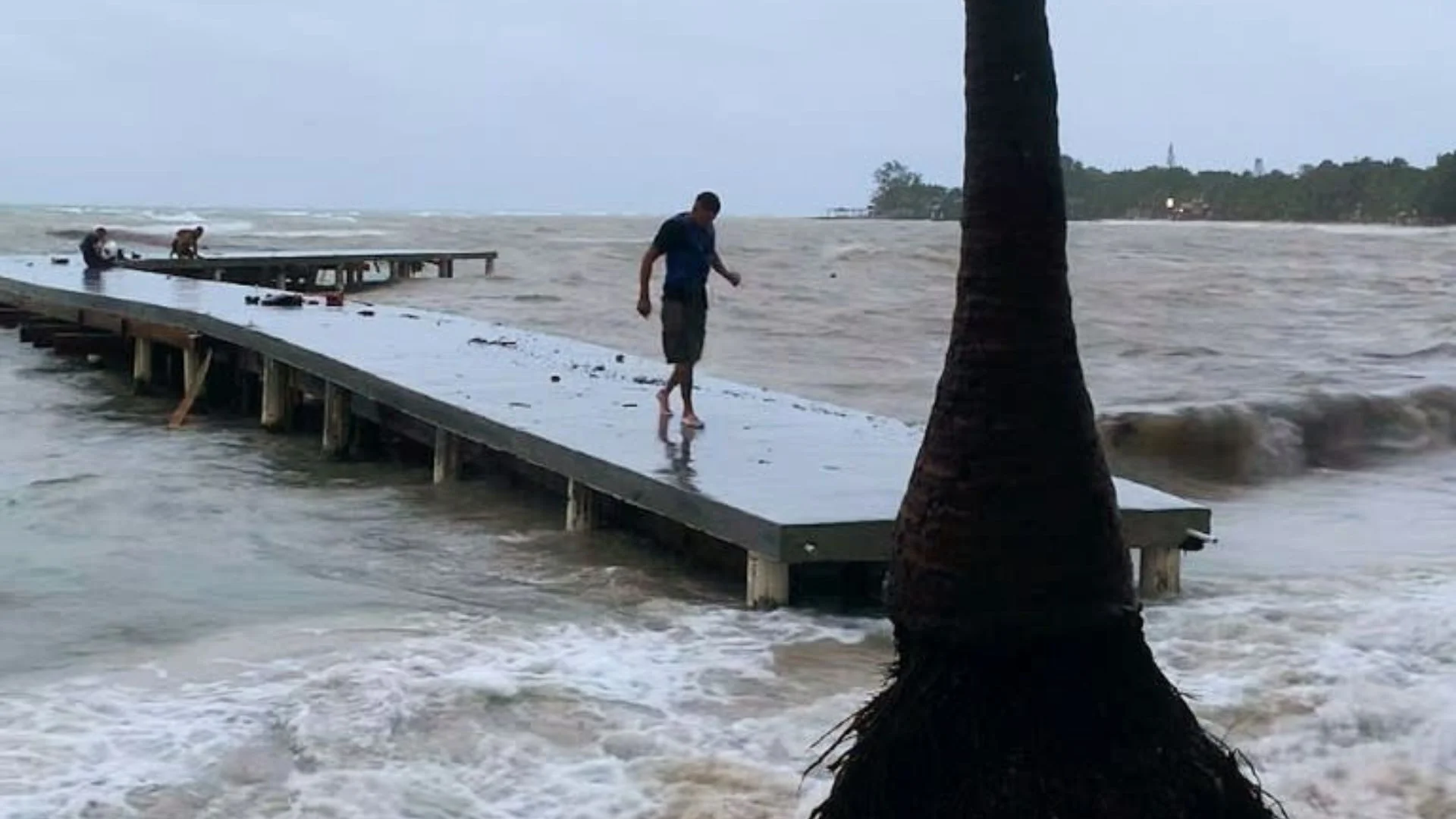
In the early 1960s a series of discoveries in Afghanistan put the focus on the country; revealing it as a treasure trove of archaeological finds. The findings revealed the importance of the country, and turned it into an essential part in the study of the historical and cultural evolution of central and south Asia, Iran, China, and India. Starting from the pre-historic era the region is now central in understanding the socio-cultural, religious, and political interactions within the entire aforementioned geographical area. This article will take a brief look at the interesting parts in the history (pre-historic, proto-historic, and historic eras) of Afghanistan, cultural links with India, and explore a bit of its Hindu past.
 Late Harappan culture (Wiki Commons)
Late Harappan culture (Wiki Commons)

Mahisasuramardini from Ghazni, 4th c. CE. Now at the Kabul Museum.

Neck Ornament, 1st- 2nd c. CE, Tillya Tepe, Tomb V.
Ganesha, 5th c. CE, Gardez, now at the Pir Ratannath dargah locality in Kabul.
PRE-HISTORIC PERIOD
In 1974, Louis Dupree and his team discovered various Lower and Middle Paleolithic tools from a site in the Ghazni province. The Lower Paleolithic tools comprised of pebble tools, choppers, chopping tools, hand axes, etc., and according to the scholars the culture showed remarkable similarities with the Soanian culture of India (archaeological culture of the Lower Paleolithic in the Sivalik Hills).
As V.C. Srivastava (1982) in his book “The Prehistoric Afghanistan” suggested, it was likely that there existed a common cultural zone stretching from southern Afghanistan to India during the Lower Paleolithic era. Similarly Middle Paleolithic artifacts found at the Dasht-I Newur site again suggests closeness to the Indian cultural zone. In 1976 the Soviet excavation team headed by A.V. Vinogradov excavated many epi-Paleolithic or Mesolithic sites (Samangan and Turkestan) near the sandy deserts, and the alluvium deposits by the rivers descending from the Hindu Kush Mountains. Here again, as Srivastava pointed out, there were many common cultural traits among the epi-Paleolithic or Mesolithic sites of Afghanistan (Dasht-I Newur and Tukestan sites) and the Ganga valley sites in India (Mesolithic lake cultures).
PROTO-HISTORIC PERIOD
Shortugai, situated on the eastern bank of the river Amu or Oxus has been the most important site in Afghanistan, which was excavated in 1975 by a French archeological team headed by H.P. Francfort, where the the remains of four Bronze Age sites were found. The cultural periods discovered at Shortugai are Shortugai I, II, III, and IV; and of these, the period I coincides with the Harappan era culture, while II and III match with the post or late Harappan culture (Jhukar area, as shown in the map).
The Shortugai I matches well with the Harappan culture, as evident from the Harappan era pottery found at the site. Furthermore, large finds of lapis lazuli and gold, along with a Harappan seal with a rhinoceros and inscription engraved on it suggest that the site would have been a trading colony serving as a trade outpost. As Kenoyer (1998) tells us, “Another source of gold was along the Oxus river valley in northern Afghanistan where a trading colony of the Indus cities has been discovered at Shortughai. Situated far from the Indus Valley itself, this settlement may have been established to obtain gold, copper, tin and lapis lazuli, as well as other exotic goods from Central Asia” (Ancient Cities of the Indus Valley Civilization, OUP, p.96).
Besides Shortugai, the Soviet team found three other Bronze era farming and cattle breeding cultures in the oases parts of northern Afghanistan—Daulatabad, Dashli, and Farukabad. In India, evidences of farming and animal domestication from some sites in UP from the Neolithic (late Mesolithic) period were found (G.R. Sharma, et al. Beginnings of Agriculture: From Hunting and Food Gathering to Domestication of Plants and Animals, 1980). Based on these finding reports, Srivastava (The Prehistoric Afghanistan, 1982) points out that with further researches it could be possibly established farming and cattle breeding cultural links between India and the various Afghanistan bronze era sites. Of the three aforementioned sites, Dashli is significant as it shows the building plan of a round building, which is a probable point of the origin of arch, and has ceramic kilns for melting metals as evident from traces of a melted dagger blade— thus proving it to be a place where old metals were melted to form new items. In 1974 Dupree explored the site Abai Istata in Ghazni and found Bronze era pottery of the Harappan variety, and concluded that it was a similar Harappan trading site as Shortugai, thus again showing the close cultural connectivity.
HISTORICAL PERIOD
The Tillya Tepe site in northern Afghanistan, which was earlier considered a farming settlement from 1000 BCE to 500 CE, later revealed Iron Age artefacts in the 1969, 1971, and 1978 excavations by the Soviet team. However, what is interesting is the large amount of gold found from what is said to have been the graveyard for the people living in the nearby ancient city of Emchi. The site yielded 15000 pieces of gold relics, which included earrings, crown, nose-rings, bangles, finger-rings, belts, plates, figures of deities, etc., all of which belong to the Kushana period. A-Khanum, another site, which was an urban centre with continuous habitation from 4th c. BCE to 2nd c. CE, has yielded a coin of Agathocles (early 2nd c. BCE), which shows the prevalence of Vasudeva Samkarsana worship at that time. Various other sites have revealed Kushana era Shiva-Parvati iconographic presence, Buddhist stupas, along with many other artefacts, all of which can help to make a good study of the socio-economic, religious, and political history of Afghanistan under the Kushanas, with a comparative analysis of the Indian scenario under the same dynasty (one must note here that during ancient times the current geo-political boundaries didn’t exist). While some theories postulate that after the Kushana period urban culture seemed to have disintegrated in India, the evidences from the Afghanistan excavated sites however speak otherwise and do not support this theory.
A further look at Afghanistan’s historical period shows various Kushana era coins that represent both Hindu and Buddhist deities. In fact most of the Kushana-Sasanian and Kidara-Kushana coins show Shiva with nandi. The Chinese travelers have recorded in their books the presence of many ‘deva’ temples in Afghanistan, and one such remaining deva-sthal is the Surya temple in the Khairkhana pass of Kabul. The late Kushana and Hephthalite kings also showed reverence for Shiva and Nrshimha, while sculptures showing distinct influences of the Gupta period, and the Kanauj school of Gupta traditions of art (7th -8th c. century) have been also been found.
The Kanuaj school of Gupta sculptures most likely entered Afghanistan through the powerful yet short-lived rule of king Lalityaditya of Kashmir, a kingdom which he had inherited from his predecessors. The Karkota dynasty had already expanded their kingdom by 7th c. CE, and under their king Candrapida (Rai Ratbil of the Arab chroniclers) the dynasty ruled entire Punjab, and had the Hindu Shahis of Afghanistan as their vassals. The Hindu presence continued in Afghanistan as late as 9th-10th centuries when the Hindu Shahi dynasty that started as governors under the Kashmir kings but later declared their independence, took control of the Afghanistan Mountains as the ruling family.
Afghanistan has been seeing wars and violent clashes in the post modern era, starting from the Cold War period to the recent second time takeover by the Taliban terrorists, which has left very little hope for further researches into its pre-Islamic past. The iconoclastic Taliban terrorist regime is an open and obvious threat to the Kabul museum, which stores some of the priceless artifacts from ancient Afghanistan (such as the beautiful head of Mahisauramardini). While by the late 19th century, Afghanistan had turned into a hotspot for sale of its ancient artefacts (trade in antiquities) with buyers primarily from the US and Europe, and which resulted in most of its valuables moving out of the country; however, one can still hope that the remaining artefacts in the museum do not face the same fate as the Bamiyan Buddhas.
The author is a well-known travel, heritage and history writer. Views expressed are personal.















